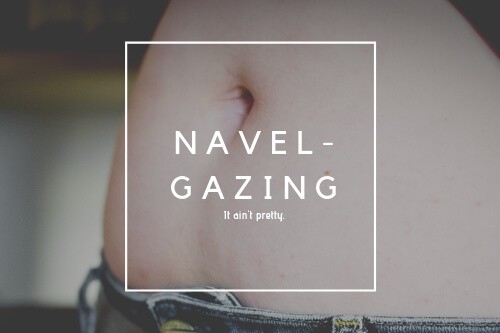
YouTube / iTunes / Spotify / Radio Public / Pocket Casts / Google Podcasts / Breaker / Overcast
Listen to ArtisanEnglish.jp posts & lesson intros here.
WotD: Navel-gazing
The world in 2019 is a world of action, decision-making, and deep meditation.
That’s why many people get upset when they see others navel-gazing.
Now, navel-gazing sounds like serious stuff.
Before we can continue, you must know what a navel is.
Navel is another word for belly button.
Look at your stomach if you don’t know what a belly button is.
Do you see that little round thing in the middle of your stomach?
That’s your belly button or navel.
While I’m on the subject, I might as well keep going and explain that there are two types of belly buttons – the outie and the innie.
If your navel sticks out a little bit, you have an outie.
If you can fill your belly button with water when you are in the bathtub, you have an innie.
Now, we can get back to more pressing matters.
When a person is navel-gazing, they think about themselves too much and ignore other, more important things.
A quick search online reveals these headlines:
“‘Navel-gazing‘ politicians warned about slow Brexit response” (Belfast Telegraph, May 24, 2017)
“Trump is the navel-gazing president for our navel-gazing society” (The Week, September 7, 2018)
So, it would seem British or American politicians have been navel-gazing recently.
It may be a favourite pastime for politicians.
It gives me the image of many old white men with their necks bent down while they look at their belly buttons and think about themselves.
I guess navel-gazing is an appropriate term to describe it because Brexit is a total mess at the moment, and the US is just coming out of a nearly two-month-long government shutdown.
Come on, guys, look up and do something.
The world is going to hell in a handbasket, and you’re there looking at your belly button!
Flesch-Kincaid Readability Test
This post is understandable by someone with at least an 8th-grade education (age 13 – 14).
On the Flesch-Kincaid reading-ease test, this post scores 70.
The easier a passage is to read, the higher the score on a scale of 0 – 100.

